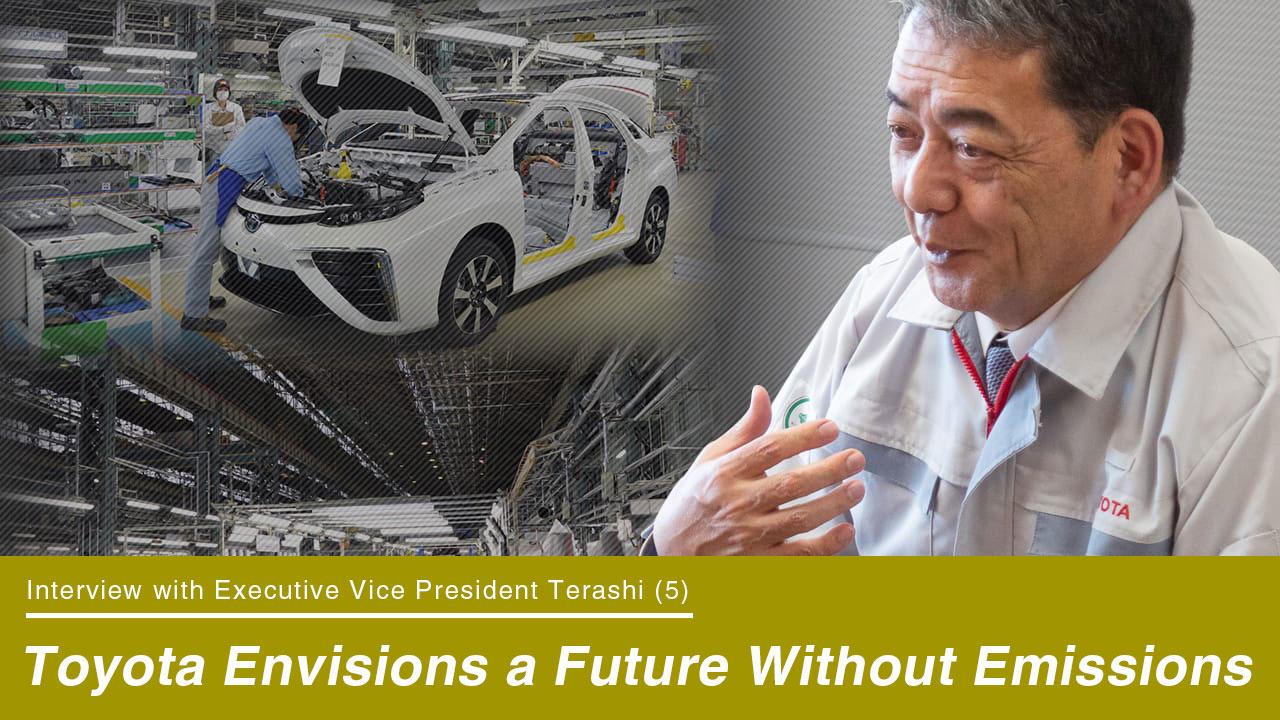
Toyota goes to the moon: What is Toyota's strategy for electrification? -
Interview between Naoto Ikeda (Motor Journalist) and Shigeki Terashi (Part Five - Final)

An interview with Executive Vice President Terashi by motor journalist Naoto Ikeda was published on March 16th and 17th on “THE PAGE”, a news site operated by Yahoo’s subsidiary Wordleaf Corporation that highlights noteworthy trends and social problems in the world and explains them clearly. Based on the length of the content, TOYOTA TIMES serialized the content of this interview over five episodes with the cooperation of “THE PAGE” and Mr. Ikeda.
Toyota will embark on a project exploring the moon. Borrowing from the words of President Akio Toyoda, Executive Vice President Shigeki Terashi has stated that the challenge is to combine “the virtual with reality” and bring the technology on earth to the moon. In this, the fifth episode of a five-part series, motor journalist Naoto Ikeda and Executive Vice President Shigeki Terashi discuss how Toyota is often criticized for being lead-footed when it comes to battery electric vehicles (BEVs), and how the top management of Toyota’s Technical Center thinks about and plans its future strategy to meet the global trend of vehicle electrification.
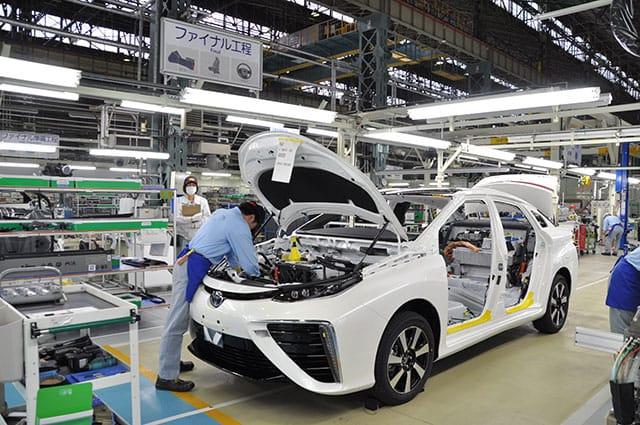
Toyota avoids phrases that include this or that era is “coming” or “over.” Toyota tries not to impose its ideals. The user chooses the car. There aren’t any automakers quite like Toyota, who understand that the buyer chooses what sells, not the maker.
In reality, products don’t get popular just because a maker does its best to promote it. Regarding this, Toyota says, “It will only be identified as eco-friendly if it becomes popular.” Therefore, the company prepares a variety of eco-cars to attract users based on conditions in their own areas, while factoring in the time axis. Even when the era of internal combustion engines is over, there will still be places on earth where cars won’t be able to run without those engines. Toyota looks at what is perceived as normal and aims to provide products that can be used anywhere, regardless of whether the region is ahead or behind any single technology. That’s Toyota’s way of doing things.
Toyota has also said something very interesting about its FCEV flagship, Mirai, and all other FCEVs (Fuel Cell Electric Vehicles), which have a long way to go in order to be accepted as mainstream vehicles. Toyota has claimed that FCEVs can purify the air.
The Mirai also doubles as an air purifier
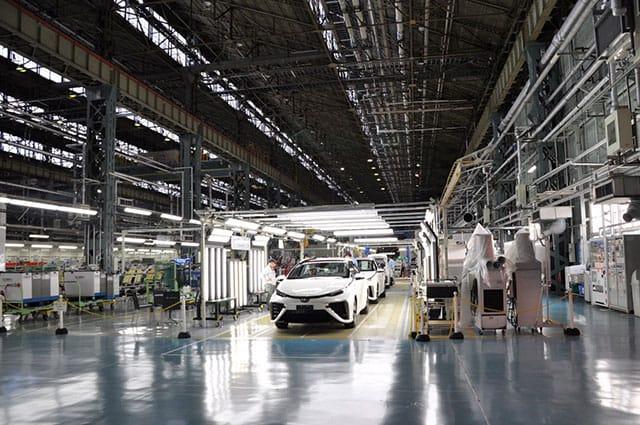
- Terashi
-
I want to contribute (to the environment) with cars, but I also believe that eco vehicles (cars designed to take the environment into consideration) are only truly able to fulfill their role if they are popularized. In that context, there are many things we have yet to explain, but did you know that FCEVs actually clean the air?
- Ikeda
-
Please tell me more.
- Terashi
-
The power FCEVs generate is from a chemical reaction in the FC stack (the heart of power generation). The fuel cell needs both hydrogen gas (from the tank) and oxygen it can absorb from the air. Then it emits what’s left. Put differently, the hydrogen and oxygen combine to produce energy, with a byproduct of what’s left – air and water. Because the Mirai can’t use the air as is, it first has to clean the air through its filter to extract the oxygen for the reaction, thereby cleaning the air. Since we use a PM2.5 filter to filter the air, there is a large difference in the air quality before and after the process. The percentage varies based on the freshness of the filter, but I’d estimate there is an 80 to 90 percent purification effect.
In this sense, the Mirai can be seen as a type of air purifier, cleaning the air by filtering out PM2.5. Thus, if we improve the quality of the filter, we can technically purify the air by filtering out nitrogen oxide and sulfur oxide. In fact, that’s the next goal for the Mirai.
Lately, whenever we talk about zero emissions, we focus too much on CO2, but we can’t ignore other air pollution. Currently, many automakers in the world are working very hard on developing technology for IC (internal combustion) engines in an attempt to continue to decrease air pollutants and greenhouse gases, but IC engines themselves cannot be eliminated so easily. That is the case in many regions. On the other hand, the Mirai is able to purify these air pollutants. - Ikeda
-
Air pollution is generally a problem in countries where the spread of automobiles has progressed rapidly. I am talking about PM2.5 and nitrogen oxide; places like China and India. Even if it doesn’t completely eliminate the problem, it’ll be interesting to see how that function might be used in these places. That said, FCEVs might be challenging price-wise for these countries.
- Terashi
-
It’s hard to say yes to the question of whether they clean the air completely, because they’re still cars, but they can at least clean the air partially. Conventional engines primarily running on gas will still be around for quite a while, so we should try our best to clean up emissions (where we can), and if the Mirai is on the road as well, we can contribute, if only a little bit, to purifying the air. We can also think about hydrogen-based cars in terms of “minus emissions” instead of zero emissions.
There will inevitably be people or customers who prefer gas-run cars for the price. Generally, we should enforce regulations to enhance environmental performance, but emissions can’t be zero structurally. So, our idea was to help with purification using the Mirai. If “exhaling” means emissions and “not exhaling” means zero emissions, then “inhaling” can be “minus emissions”. - Ikeda
-
Minus emissions?
- Terashi
-
Yes. So, when the second generation comes, I’d like to make it a “minus emissions car” including all of the above. I’m not sure if I’m using the right word, but I believe that many more ideas will come up as people share their wisdom to improve the environment.
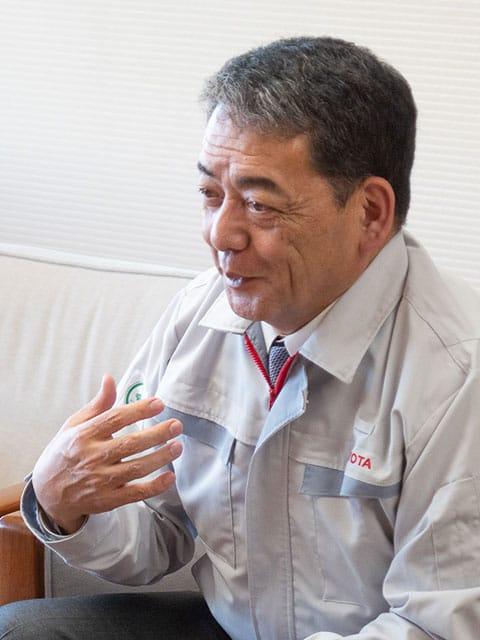
- Ikeda
-
When I see Toyota working with others, it reminds me of Windows OS. Just like how they were able to develop so much by being open to inviting third parties to freely create a variety of applications for them, you’re preparing electrification for a full line up of vehicles and largely opening it up for use by others, even including the new, cutting-edge FCEV.
- Terashi
-
Yes. There are already third parties doing things like remodeling FCEV buses by attaching two sets of tanks and cells on the roof. Including all regulations. If there is precedent, it’ll attract other bus companies to FCEVs, and installation should be easy. If they can work with us, buses will be pretty easy. Even with the experiment with large trucks in California, it was pretty easy after we gave it a try.
- Ikeda
-
The ladder frame (a ladder shaped frame used for many trucks) is easier. There is ample space, unlike monocoques (a structural method used for many passenger cars with a strengthened outer hull).
- Terashi
-
There are already spaces begging to be used. In the long term, we’ll still need trucks and buses. The travel distance is much larger than passenger cars, so, naturally, the use of hydrogen will increase and that also increases the number of stands.
- Ikeda
-
Having freedom with space means that if you create to some extent a general-purpose system, you can provide it to various truck makers, and each company will make its own variation of FCEV trucks.
- Terashi
-
Exactly. For those fittings, there is talk about using new cars from other makers, but in many nations, cities, and regions, they are interested in doing it using currently operating vehicles. I think there will be many others with ideas about what kind of city they want to build. The energy plan is an important part (of any plan). At that time, Toyota won’t be able to go around helping with everything. We would then need to share our knowledge and then let them work with domestic or regional engineering companies. We get excited when people talk to us a lot, and because our engineers are disciplined, they try to respond to everything. But in the end, we lose momentum because no one has the actual time to work on the ideas, so it can become a problem.
When you see things from the perspective of the seller, you will understand how Toyota’s buyers think
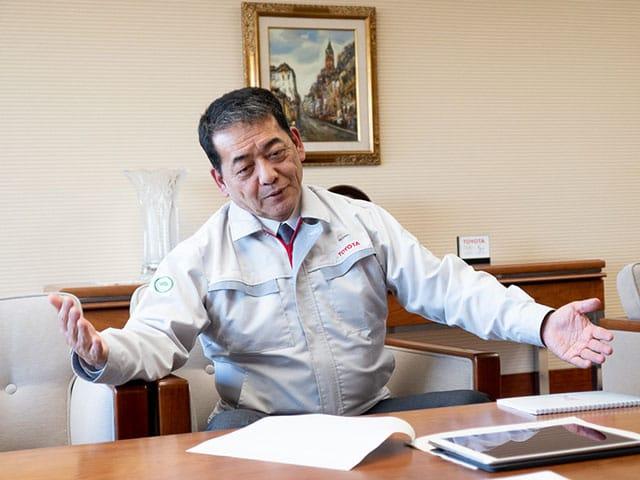
- Ikeda
-
So you want a situation where many people can take part in what could be called a joint effort?
- Terashi
-
Even as a system, Toyota hasn’t sold parts “B to B,” in the past, so we’re not good at that. When you see things from the perspective of the seller, you will understand how Toyota’s buyers think. However, if acting as a system supplier, Toyota can experience the business as either “B to C” or “B to B” and that allows us to understand the struggles of buyers.
- Ikeda
-
That has contributed to your resilience.
- Terashi
-
After all, there are many people who think they did everything because the buyers praise them and get the wrong idea. That’s incorrect. As an example of being helped by the technology of those we work with, there is B to B part distribution, which we call tashahan (“competitor sales”). When we do this, we realize how hard it is to please many makers (laughs).
The importance will continue to increase, but alliances are difficult. We sign MOUs (Memorandum of Understanding) when creating alliances, but when the numbers increase, it can be hard for all the partners to agree, so it will be easiest to have a consortium, which anyone may join, but Toyota isn’t trusted yet, so people tend to think we must be plotting something. - Ikeda
I was honestly stunned by how mindful and well-prepared Toyota was after the interview. I thought, when did Toyota become such a company? Just about 10 years ago, Toyota was more overbearing. Even though they produced a national budget sized profit of 2.4 trillion yen according to the latest financial results, they seem to be the most alert among all the automakers. I find it very strange. This is an odd way to put it, but it seems almost inhuman not to be at least a little arrogant at this point.
As strange as that is, I more or less understand the reason. I’m just not convinced that that reason could make such a big change. In 2010, after their large-scale recall, Toyota experienced the horror of no one believing anything they said during the public hearing in North America. Not many people in Japan know about this, but, one wrong step, and Toyota could have collapsed. At that moment, Toyota realized that they must demonstrate that they are a good corporate citizen that contributes to society every day.
More than anything, I got the impression that one person can’t do everything. Making a big deal about being Toyota when out in the world doesn’t produce results if people aren’t moved by it. I believe that words like “customer,” “making allies,” and “Team Japan” originated with the public hearings in North America.

